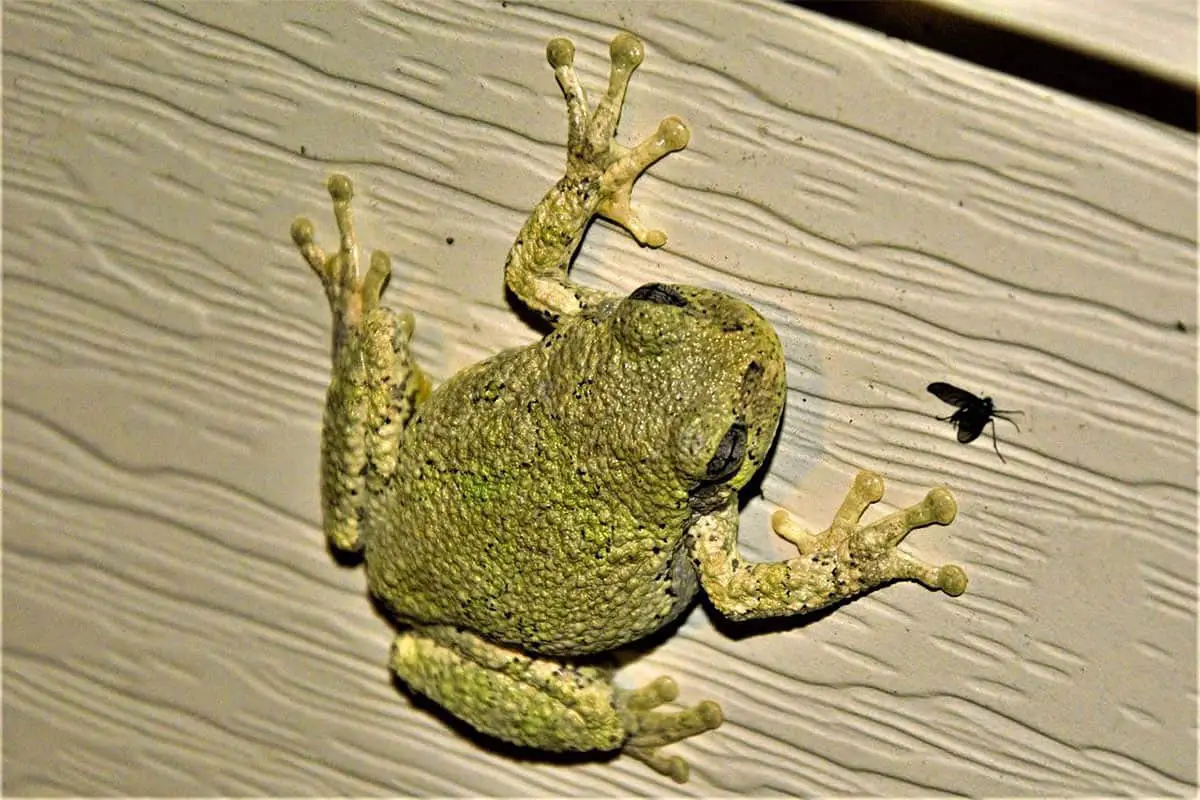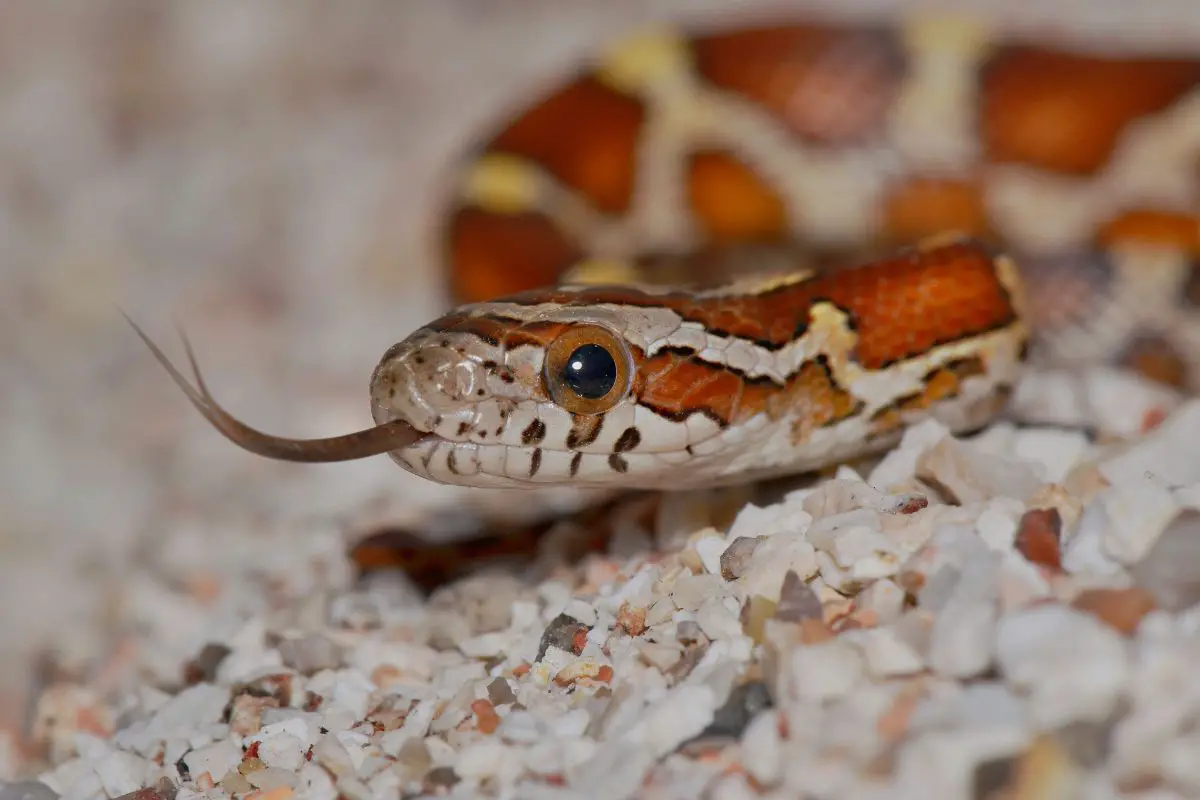Frogs are colorful, diverse, and create catchy sounds. There are over 100 species of frogs in North America, each with unique characteristics that help them survive in the wild. We know most frogs are great at jumping, but can frogs climb walls? Yes, there are frogs that climb walls.
Most of the species in North America with a special type of adhesive on their toe pads to allow them to stick to surfaces are classified as tree frogs. However, at least one uses claws instead. Learn more about these talented species in this list of 15 North American frogs that climb walls.
15 frogs that climb walls
1. Gray tree frog
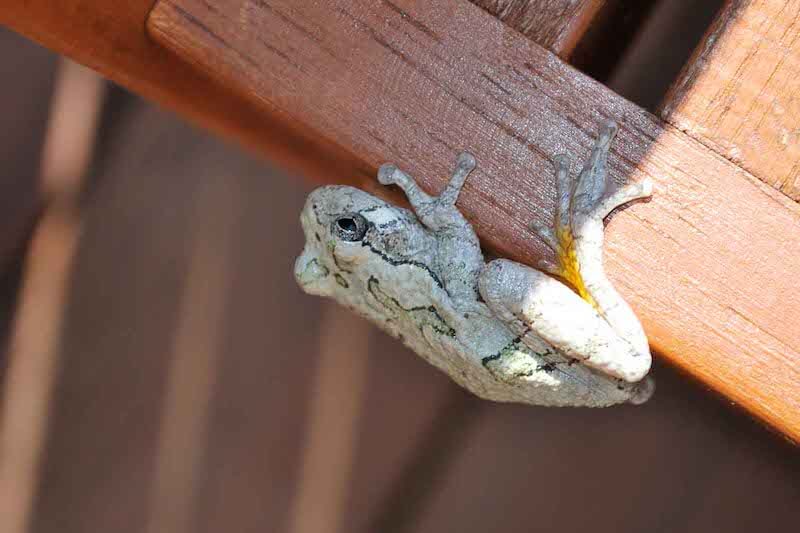
Scientific name: Dryophytes versicolor
Gray tree frogs are not just gray but also green or brown. Their back is typically a mottled coloring similar to lichen. They enjoy spending time in high places and only come to the ground to breed. These frogs live in various eastern U.S. habitats, including backyards, forests, and swamps.
2. Pine barrens tree frog
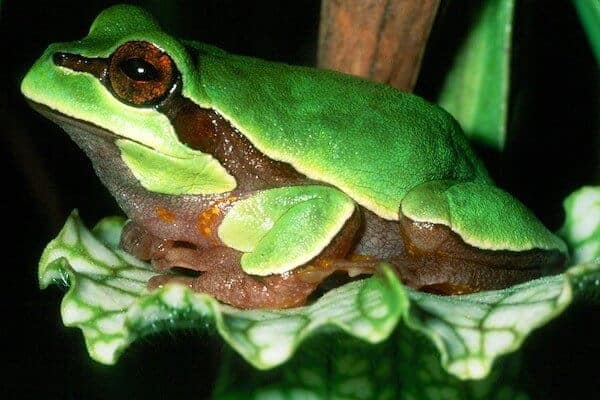
Scientific name: Dryophytes andersonii
Can frogs stick to walls? Here’s where the Pine Barrens Tree Frog comes in. These medium-sized frogs grow to nearly 2 inches and are mostly green with dark, wide stripes on the sides of their bodies.
While they often spend time on the ground, they possess sticky toe pads to assist with climbing. There are isolated populations in New Jersey, South Carolina, the southern North Carolina Sandhills, as well as the Florida panhandle.
3. Spring peeper
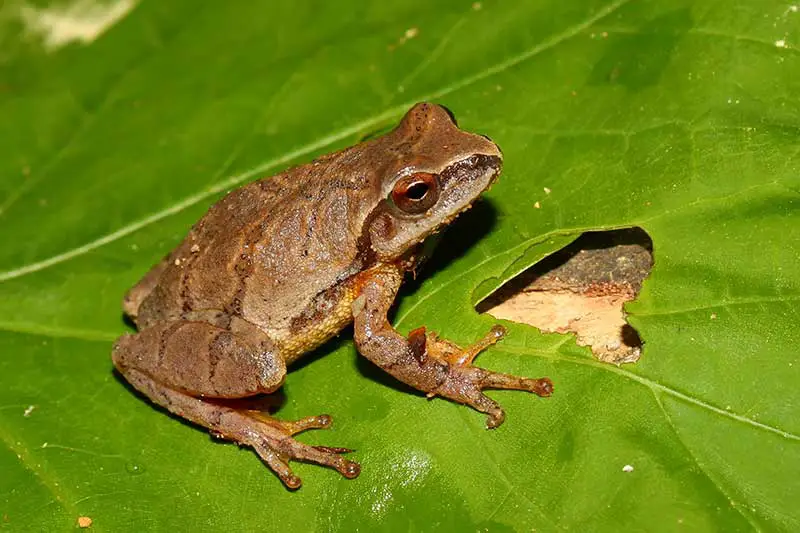
Scientific name: Pseudacris crucifer
Spring peepers are tiny tree frogs around an inch long, with smooth skin and a distinctive X on their back. They’re known for their repeated, high-pitched “peep” sound.
While these frogs spend most of their time on forest floors, they do have large toepads that allow them to climb trees or walls. They live throughout much of the eastern U.S., including west towards Minnesota and Texas. In Canada, they range from Maritime Provinces to southeast Manitoba.
4. Canyon tree frog
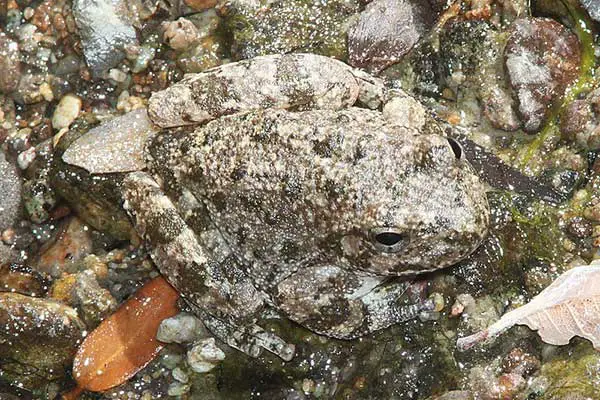
Scientific name: Dryophytes arenicolor
You can find the canyon tree frog throughout the southwest, from Utah to central Colorado and down to New Mexico, Texas, and Mexico. They have large adhesive pads on the toes of all 4 feet that let them easily climb rocks and canyon walls. Their color matches their habitat with browns, gray-brown, tan, or gray-green.
5. American green tree frog

Scientific name: Dryophytes cinereus
A yellowish-green or lime green with white or pale yellow undersides, the American green tree frog has smooth skin and grows up to 2.5 inches. They are popular wall-climbing pets, but hard to spot in the wild since they live very high up in trees. You can find them in southeastern US states from eastern Virginia to Florida and west to central Texas.
6. Bird-voiced tree frog
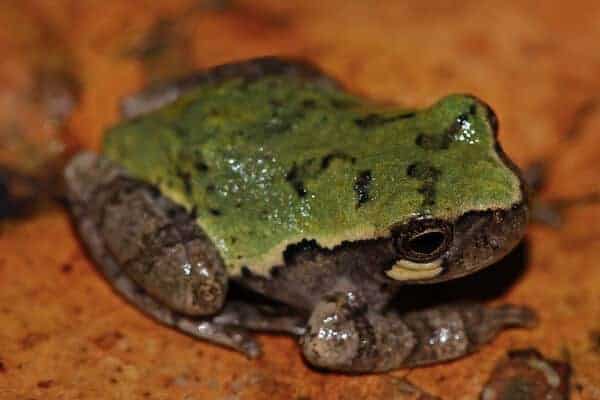
Scientific name: Dryophytes avivoca
The bird-voiced tree frog makes a distinctive “wit wit wit” sound you can hear throughout the night. These nocturnal grey, pale brown, or pale green frogs hardly ever leave higher elevations except for breeding. You can find them in marshes, swampy forests, and wetlands in the southern U.S states as well as southern Illinois.
7. Wright’s mountain tree frog
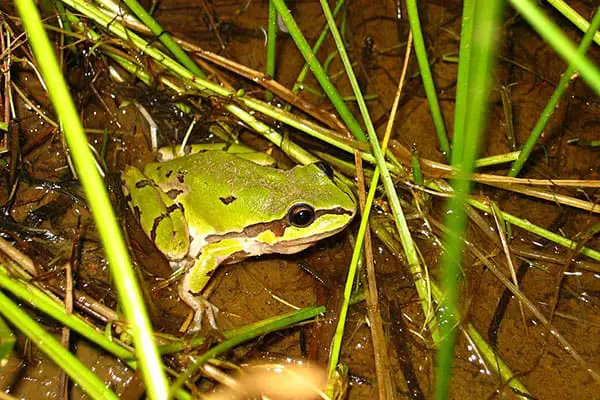
Scientific name: Hyla wrightorum
Wright’s mountain tree frog are small and mostly green with dark stripes on their legs and crossing their eyes. They live in mountainous habitats in central and southeastern Arizona down to Mexico, following the Sierra Madre. Be careful if you see one in the wild since these frogs have toxic skin that will irritate your eyes if you handle them.
8. Pacific tree frogs
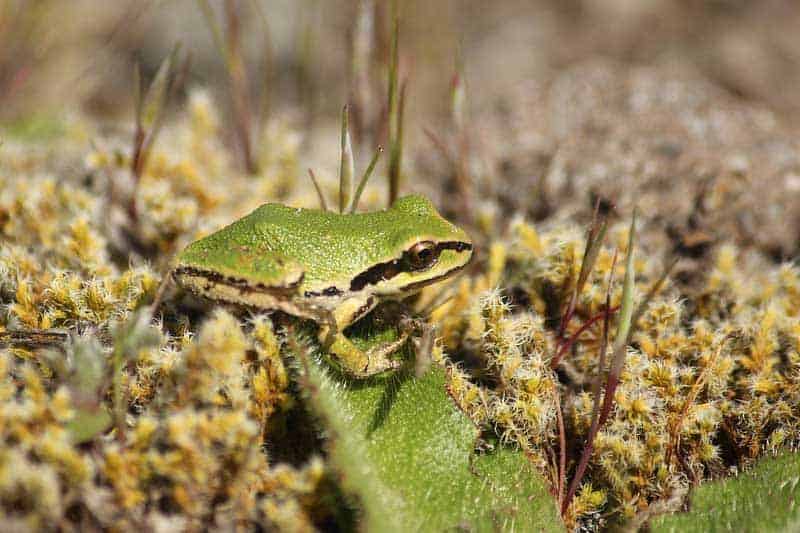
Scientific name: Pseudacris regilla
Pacific tree frogs are mostly green or brown and make the popular rib-bit sound we associate with frogs. While they are excellent climbers, these frogs prefer hiding from predators in underground burrows. You can find them in western North America, from southern British Columbia down to Baja California and east to Montana and Idaho.
9. Squirrel tree frog

Scientific name: Dryophytes squirellus
A popular backyard frog, you can find squirrel tree frogs on buildings, in trees, or on your porch. They also live in forests, pine flat woods, and floodplains throughout southeastern U.S. states. Although called “squirrels,” they make a raspy, duck-like sound during the breeding season.
10. Pine woods tree frog

Scientific name: Dryophytes femoralis
Pine woods tree frogs have a sporadic call that gives them the nickname the “morse code frog.” They can be all gray or reddish-brown with dark back markings.
Their minimally webbed feet and sticky toe pads make them excellent climbers, especially when hiding in large pine trees. They are abundant in the U.S. Coastal Plain states.
11. Barking tree frog
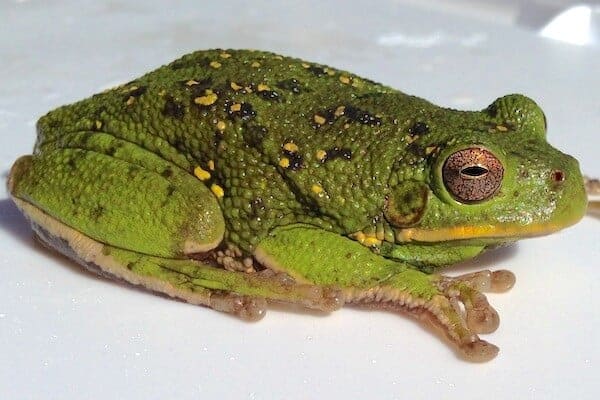
Scientific name: Dryophytes gratiosus
The largest native North American tree frog, the barking tree frog grows up to 2.8 inches long. They get their name from the explosive, loud tonk call they repeat every 1 to 2 seconds. You can find them in various woodland habitats throughout the Southeast Coastal Plain.
12. Boreal chorus frog

Scientific name: Pseudacris maculata
Native to Canada, you can find the boreal chorus frog from the Northwest territories to Quebec and eastern British Columbia down to Montana, Wisconsin, Utah, Arizona, and New Mexico.
They are normally brown with a dark band crossing the eye. They aren’t the highest climbers on this list since they have only slightly enlarged toe pads and stout legs.
13. Mexican tree frog
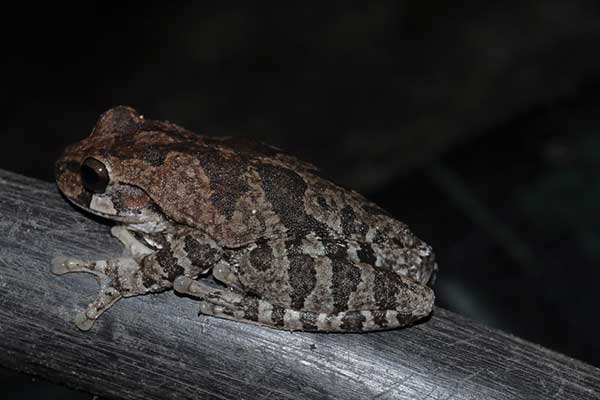
Scientific name: Smilisca baudini
Mexican tree frogs are large brown-grey frogs, growing up to 3 inches long. They have muscular forearms that help them climb and their skin produces a wax to keep them from drying out, giving them the nickname “waxy tree frog.” You can find them from the Sonoran Desert and Texas Lower Rio Grande Valley down to Mexico and Costa Rica.
14. Cuban tree frog
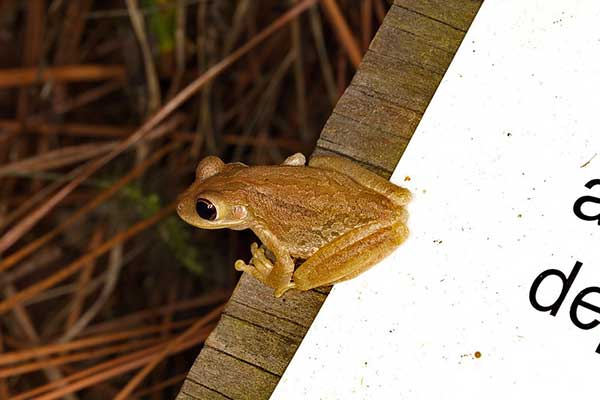
Scientific name: Osteopilus septentrionalis
An invasive species in North America, the Cuban tree frog can grow between 2 and 5.5. inches long. They’re so large they prey on native tree frogs, causing significant problems. You can find them in southeastern states, including most of Florida and the coastal Texas regions. Well-adapted to urban landscapes, don’t be surprised if you see them on your windows!
15. African clawed frog

Scientific name: Xenopus laevis
Although not a tree frog with sticky adhesive pads, the African clawed frogs can climb rough wall surfaces. They use their claw-like toes to cling onto walls with their toes splayed out to prevent slipping.
These native African frogs are an invasive species in the U.S. There are isolated populations in 11 states, including Colorado, California, Arizona, Florida, Massachusetts, North Carolina, and Wisconsin.
